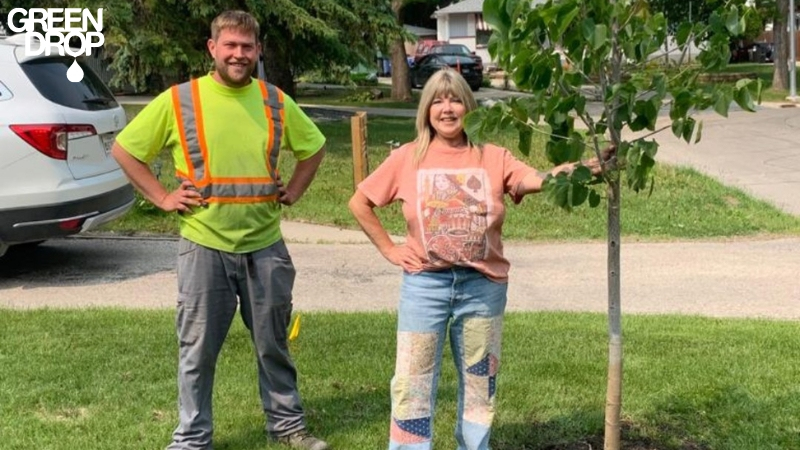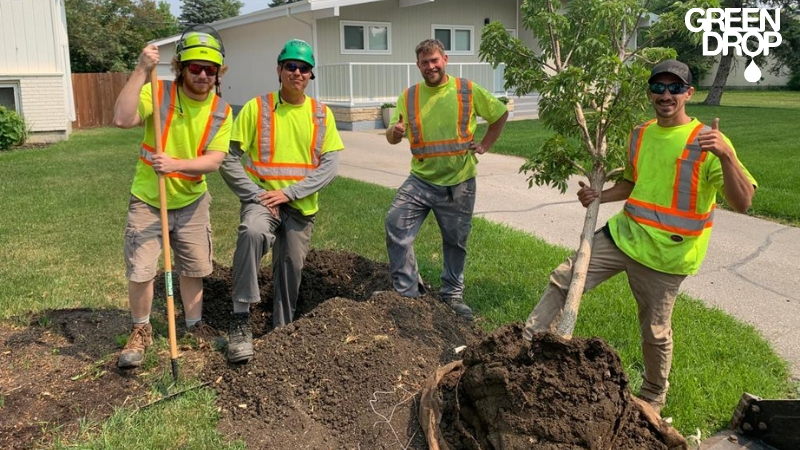11 Common Myths About Tree Care
Reading time: 4 minutesHave you ever heard some wild stories about how to care for trees? From old wives' tales to well-intentioned but misguided advice, there's no shortage of myths swirling around the world of tree care.
But fear not! Today, we're going on a myth-busting adventure through the forest canopy to separate fact from fiction.
So, put those pruning shears down, and let's debunk some common myths about tree care.

The Truth About Tree Care - Dispelling Some Myths
Myth 1: Trees are self-sufficient.
Reality: As addressed before, they really aren’t. Trees can suffer from drought stress and shallow root growth without proper hydration. Inadequate watering results in weaker roots, making your trees more susceptible to drought, pests, and diseases. Like any other plant, your trees need consistent watering, particularly during those hot and dry summers.
Myth 2: Newly planted trees need a lot of water every day.
Reality: While it's important to water newly planted trees regularly, over-watering can be harmful and may lead to root rot. It's better to water deeply but infrequently, allowing the soil to dry out slightly between watering to encourage healthy root growth.
Myth 3: Watering trees is as simple as dumping water.
Reality: This is what we refer to as shallow watering. It only wets the topsoil, leading to shallow root systems that can’t withstand drought.
Instead, water deeply and infrequently to promote strong root growth. Aim to moisten the soil to a depth of 12–18 inches to encourage roots to reach deeper for water. Think of deep watering as giving your tree a tall drink rather than just a quick sip. It’s much more satisfying!
Myth 4: Mulch is just for the looks!
Reality: Mulch isn't just there to look pretty. It provides critical benefits like moisture retention, temperature regulation, and weed suppression. However, piling mulch too high around the base of a tree, creating a "mulch volcano," can cause rot and invite pests.
Apply a 1–2 inch layer of mulch around the tree's drip line, but keep it a few inches away from the trunk to prevent rot. Correct mulching keeps the soil cool and moist, ensuring your tree’s roots stay happy and healthy.
Myth 5: Trees should be pruned heavily to promote growth.
Reality: While tree pruning is important for its health and structure, excessive pruning can actually stress the tree and lead to weak growth. Proper pruning techniques should be followed, focusing on removing dead, diseased, or crossing branches and shaping the tree as needed. The best person who can do the job right? An arborist.
Myth 6: All trees should be pruned in summer.
Reality: Some species, like oaks and elms, are susceptible to diseases like oak wilt when pruned during the warm months. Other species can suffer from sunscald or stress due to excessive pruning.
Prune dead or diseased branches as needed, but avoid heavy pruning in summer. Instead, consult an ISA-Certified arborist to determine the best time to prune your tree species.
Myth 7: Trees don’t need fertilizer.
Reality: Many assume trees don't need fertilizer because they grow naturally in forests. However, urban environments often lack the natural nutrients found in the wild. Trees need a balanced diet to thrive, and soil testing can help determine nutrient deficiencies.
You can use a slow-release fertilizer to promote steady growth. Avoid over-fertilizing, though, since it can lead to excessive leaf growth and water stress.
Myth 8: Tree wounds should be covered with pruning paint or sealant.
Reality: Not necessarily. Pruning paint or sealant does not always prevent decay or promote healing, and it can actually trap moisture and pathogens, leading to further damage. It's best to let tree wounds heal naturally, as the tree has its own mechanisms for compartmentalizing decay.
Myth 9: Trees can be topped to control their height.
Reality: Topping, or the indiscriminate cutting back of tree branches to stubs, is extremely harmful to trees. It can lead to weak regrowth, decay, and an increased risk of pest and disease infestation. Proper pruning techniques should be used to reduce height or size while maintaining the tree's health and structure.
For more, check out our blog: Tree Topping vs. Crown Reduction: Our Alberta Arborist Weighs In.
Myth 10: Adding stakes to newly planted trees is always necessary.
Reality: Staking can benefit young trees in windy areas or those with weak root systems, but it's not always necessary. Overly restrictive staking can hinder the development of a strong trunk and root system. Only stake trees when absolutely necessary, and remove the stakes once the tree is established.
Myth 11: If a tree looks healthy, it doesn't need maintenance.
Reality: This is a big no! Even healthy-looking trees require regular maintenance, including pruning, watering, and disease and pest management. Preventative care can help identify and address issues before they become serious problems, prolonging the life and beauty of your tree.
…And that’s about it! By dispelling these common myths and following proper tree care practices, we promise you can promote your trees' health, vitality, and longevity.

Professional Tree Care Backed By Science
As we wrap up our journey through the tangled undergrowth of tree care myths, one thing becomes abundantly clear: caring for trees isn't just about following tradition or hearsay—it's about understanding the science behind their needs. And our arborists at Green Drop get that. That’s why we have well-thought-out tree health care plans designed specifically to make sure your trees are well-taken care of.
Schedule your free tree care assessment with our ISA-certified arborists.
Here's to a future where our trees stand tall, healthy, and myth-free, thanks to a little wisdom and a whole lot of tree love. Happy tree-tending!

